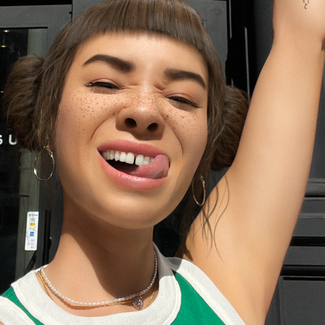
can brands use virtual influencers to take bigger creative risks?
What is real and what is a fake? We ask whether virtual influencers are great or gimmick for the industry
18 July 2023
Virtual Influencers are one of the industry’s most intriguing emerging trends. The extraordinary surge in AI and virtual influencers is surpassing even the rapid growth of social media itself. According to Rahul Titus, the global head of influencer marketing at Ogilvy, this channel is experiencing an astonishing 300 per cent annual expansion, firmly establishing itself as the fastest-growing creative tool worldwide. For marketers this flourishing avenue presents an incredible opportunity to seize. So how can brands use virtual influencers to take bigger creative risks?
While virtual influencers have been around for a few years, the advancing technology has blurred the lines between AI and human influencers, making it increasingly difficult to discern one from the other. From virtual AI influencers like Lu, that was created by Brazilian retailer Magazine Luiza, to virtual global pop star Lil Miquela to deep fakes of the Pope in Balenciaga and money saving expert Martin Lewis promoting ‘Quantum AI’ investments supposedly backed by Elon Musk - the virtual landscape present brands with a unique opportunity to engage consumers online. Lil Miquela, a self-described “19-year-old robot living in LA”, has worked with supermodel Bella Hadid on a Calvin Klein ad. But what about concerns surrounding authenticity, trust, and transparency? Ogilvy, for instance, has taken a significant step by introducing the AI Accountability Act - a new initiative calling for policy change by asking agencies and social media platforms to mandate disclosure around the use of AI generated Influencers. This initiative would require brands to clearly disclose and publicly declare the use of any AI-generated Influencer content.
With the rise of virtual influencers and AI tools we are presented with an intriguing question - how can these advancements unlock greater creativity for brands and content creators, enabling them to produce valuable content more efficiently? To understand the role of AI and virtual influencers on creativity we asked a few industry experts.
Gen Kobayashi, chief strategy officer EMEA, Weber Shandwick
It’s often easy to dismiss hype trends as flash in the pan. However the exponential growth in AI adoption and innovations tells us that we have to take AI seriously and it has and will continue to fundamentally change how our industry operates. AI is another tool to help us do our jobs more effectively and more efficiently. From content creators using generative AI to help generate ideas in a matter of seconds through. To creative teams leveraging the likes of Mid Journey to help bring to life conceptual ideas that would have taken days to produce are now taking minutes. This isn’t about AI replacing what we do, but helping us to focus less on things that slow us down and focus more on getting the work and output right for our clients.
Sarah Jardine, social strategy lead at Wunderman Thompson UK
Control over the kind of content the VI creates will allow for faster turnarounds and give brand managers more control. You can include a lot more products seamlessly in your social comms, as seen with Lu Do Magalu for retail company Magalu where she can be sat at home on a couch, in pyjamas, with snacks all which have codes to link out and buy that product on their website. VI can limit creativity in some instances – especially if we think of a VI taking a bite of food, it’s hard for consumers to genuinely believe in that sort of recommendation.
Leila Seith Hassan, head of data science and analytics, Digitas UK
AI driven persuasion could provide the ability to deliver true personalisation at scale. We’re currently limited to personalisation within the bounds of what we define – simplistically, if a consumer does this (looks at jeans on a site), we do that (show all jeans, perhaps in their size, sorted by a known preference). What if AI could converse with consumers about the occasion, concerns about how they’ll feel and other challenging aspects of jean buying? This type of personalisation - the nuanced, individual responses, have just become possible. It could help deliver real, human-centred personalised experiences that help consumers (jean buying is notoriously painful). But conversely, how AI does this is very much outside the control of the agency and brands and therefore poses inherent risks.
Vincent Rebeix, global chief product and analytics Officer, EssenceMediaCom
What generative AI is doing is democratising creativity. You only need to look at the showcase page on the midjourney site to understand how what used to be only available to the few who were well funded enough to afford the very best designers is now in many instances table stakes – if not for commercial use yet due to rights management – for inspiration.
Personally what I am watching out for, is creative fatigue. In a future where everything looks amazing, original, unique and vibrant, do these characteristics which are differentiators today when it comes to impact and consumer attention lose their edge? And if so what replaces them?




